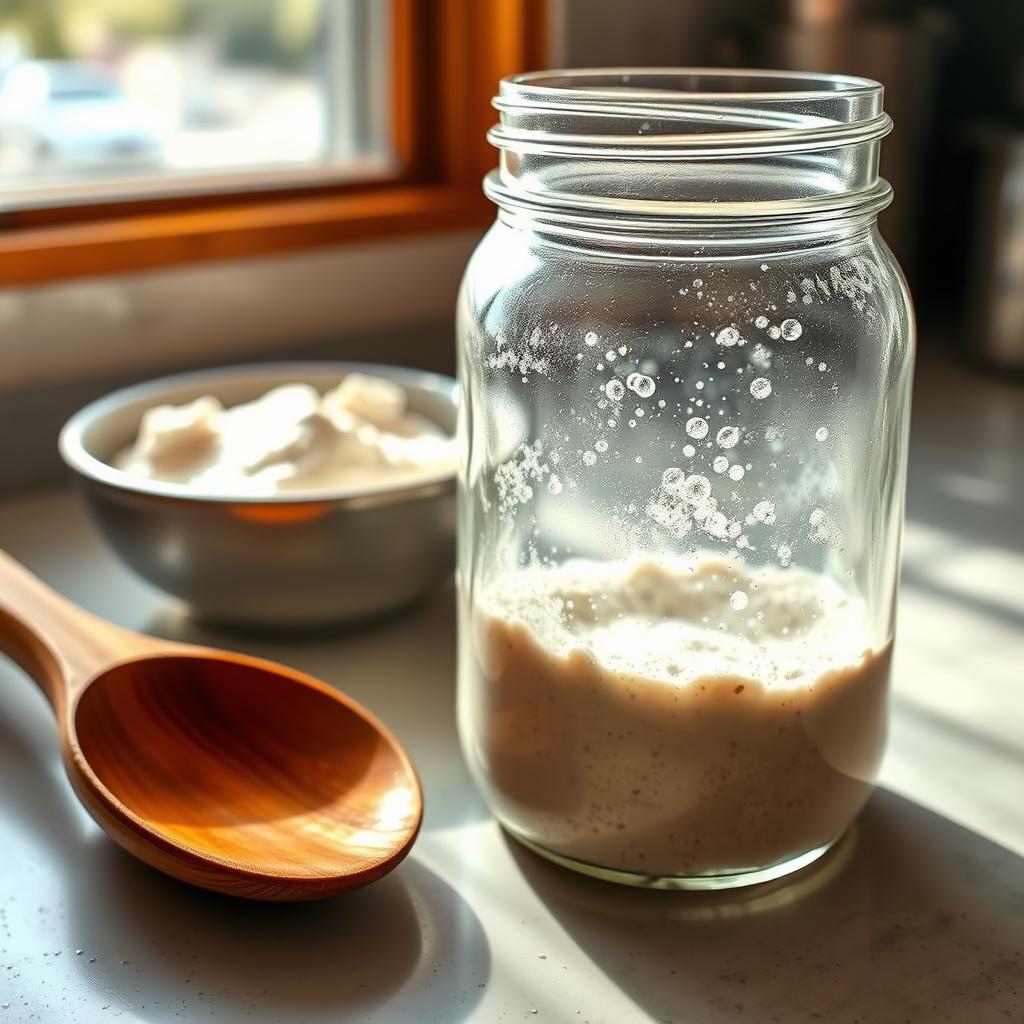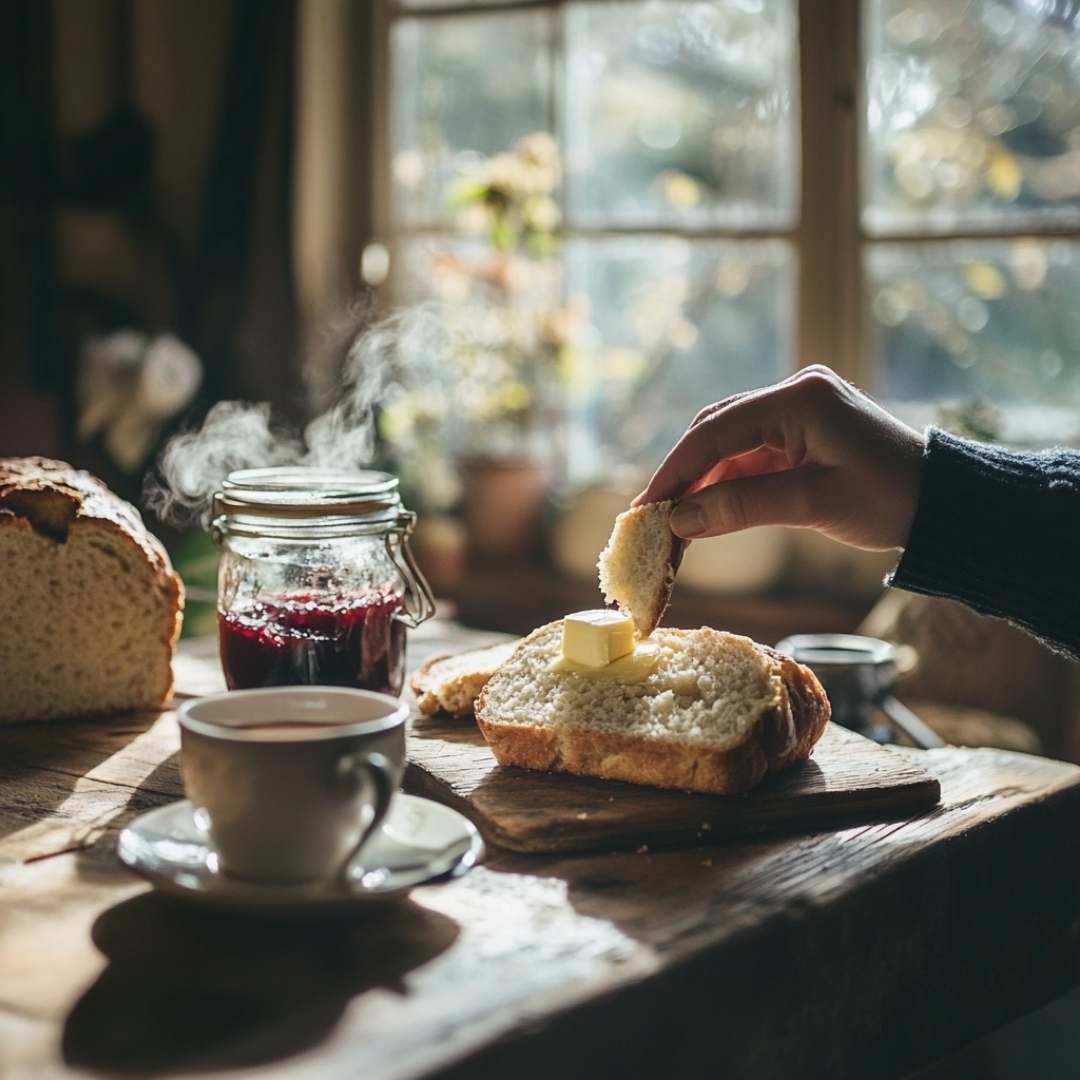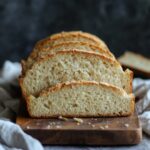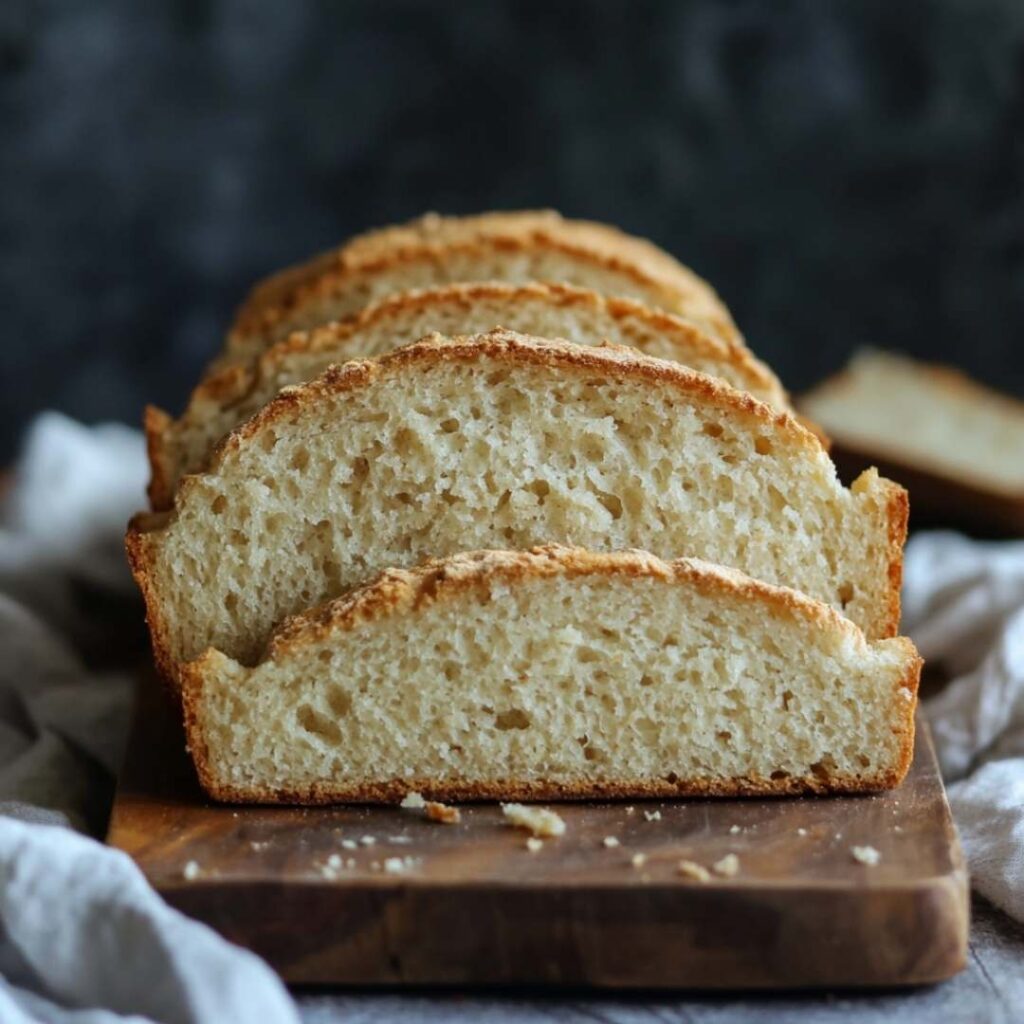The first time I pulled a warm loaf of sourdough bread from the oven, the kitchen filled with an amazing aroma. It reminded me of my grandmother’s bakery. Sourdough quick bread recipes are more than baking. They’re about making memories and connecting with a tradition that turns simple ingredients into magic.
If you’ve ever felt scared of traditional sourdough baking, you’re not alone. The beauty of sourdough quick bread recipes is their simplicity. They offer a quicker, easier way to enjoy sourdough’s rich, tangy flavors. Whether you want a quick naan or a rustic loaf, these recipes will help you get better at sourdough baking.
Table of Contents
Baking sourdough doesn’t have to be hard. With a few key ingredients and basic techniques, you can make delicious breads like pros. You’ll learn about fermentation and simple folding techniques. This will show you how easy and rewarding sourdough baking can be.
Key Takeaways
- Sourdough quick bread recipes are perfect for beginners
- Learn to create flavorful breads in less time
- Discover the versatility of sourdough baking techniques
- Understand the basic ingredients for successful quick breads
- Build confidence in your baking skills
Understanding Sourdough Basics and Benefits
Explore the world of sourdough, a unique bread-making method. It turns simple ingredients into a nutritious and tasty treat. Sourdough quick bread recipes are different from traditional bread-making.
The magic of sourdough is in its natural fermentation. Unlike commercial yeast breads, it uses wild yeast and bacteria. This creates a special taste and texture. It also offers great health benefits.
What Makes Sourdough Unique
- Contains only four core ingredients: sourdough starter, flour, water, and salt
- Fermentation time ranges from 12 to 36 hours
- Develops a more complex flavor profile
- Creates bread with improved digestibility
Health Benefits of Sourdough Fermentation
Sourdough bread is very nutritious. The fermentation process breaks down phytates, making minerals easier to absorb. It also unlocks B vitamins and may help with gluten digestion for some.
- Lower glycemic index compared to traditional bread
- Higher fiber content
- Increased antioxidant properties
- Potential anti-hypertensive qualities
Essential Tools for Sourdough Baking
You don’t need special equipment to make sourdough quick bread. Most home kitchens have what you need. A digital scale is key for precise measurements, which are vital for sourdough success.
- Large mixing bowl
- Digital kitchen scale
- Proofing basket
- Dutch oven or baking stone
Pro tip: Try pairing your sourdough quick bread with quick and easy kielbasa recipes. It’s a tasty meal that combines tangy bread with savory sausage!
Creating and Maintaining Your Sourdough Starter

Making a sourdough starter is key to great sourdough quick bread recipes. It’s a mix of flour and water that ferments ingredients into tasty baked goods.
Starting your sourdough journey needs patience and care. Here’s how to make your starter:
- Select high-quality whole rye flour and all-purpose flour
- Use filtered water at room temperature
- Maintain a consistent feeding schedule
- Keep the starter in a warm environment around 80°F
The first steps take 5 to 9 days. Your starter will grow complex flavors and power. A typical feeding is:
- 75g existing starter
- 50g whole rye flour
- 50g all-purpose flour
- 115g lukewarm water
Pro tip: Don’t throw away your extra starter! Use it in creative recipes like a quick spinach tomato pasta recipe. It adds depth and tanginess to your meals.
Look for signs of a healthy starter: predictable rising and falling, a sweet-sour smell, and lots of bubbles. With regular care, your sourdough starter will be a baking friend for life, making amazing bread and dishes.
Essential Ingredients for Sourdough Quick Bread Recipes
Creating delicious sourdough quick bread recipes starts with understanding the critical ingredients. These ingredients transform simple components into extraordinary baked goods. Your journey into sourdough baking depends on selecting the right elements that work together harmoniously.
When crafting sourdough quick bread recipes, choosing the right ingredients is key. Let’s explore the essential components that will elevate your baking skills.
Flour: The Backbone of Your Bread
Flour is vital for your bread’s texture and flavor. Different flour types offer unique characteristics:
- All-purpose flour: Versatile and consistent
- Whole wheat flour: Adds nutty flavor and nutrition
- Rye flour: Enhances complexity and depth
Pro tip for your quick naan recipe: Blend multiple flour types to create interesting flavor profiles and textures.
Water: More Than Just Liquid
Water quality significantly impacts fermentation. Use filtered or spring water at the right temperature—ideally between 70-80°F—to activate your sourdough starter effectively.
Salt: The Flavor Enhancer
Salt does more than add taste. It strengthens gluten structure and controls fermentation. Kosher or sea salt works best, with a recommended amount of 8 grams per loaf.
“Great bread begins with understanding your ingredients” – Artisan Baker’s Wisdom
Your sourdough journey starts with mastering these fundamental ingredients. Experiment, learn, and enjoy the delicious results of your baking adventure!
Temperature Control and Fermentation Guidelines

Mastering temperature control is key for sourdough quick bread recipes. It’s all about how temperature affects fermentation and yeast activity. The best dough temperature for fermentation is between 26-28°C (78-82°F). This creates the perfect environment for rich flavors and great texture.
When making sourdough quick bread, watch several temperature stages closely:
- Initial dough temperature
- Ambient room temperature
- Fermentation environment
- Proofing conditions
Interestingly, temperature control in sourdough baking also works for quick and easy kielbasa recipes. Precise cooking temperatures are key for perfect results.
| Fermentation Stage | Optimal Temperature | Duration |
|---|---|---|
| Overnight Levain | 18-21°C (65-70°F) | 10-12 hours |
| Bulk Fermentation | 22°C (72°F) | 3-3.5 hours |
| Cold Fermentation | 3-5°C (38-41°F) | 12-18 hours |
Professional bakers know temperature greatly affects fermentation speed. For every 15°F increase, fermentation rate approximately doubles. This means keeping your environment consistent can greatly improve your sourdough quick bread.
Remember, consistent temperature is key for complex flavors and proper yeast and bacterial activity in your sourdough creations.
Mastering the Stretch and Fold Technique
The stretch and fold technique is a game-changer for making tasty sourdough quick bread. It’s different from kneading because it builds gluten strength gently. Your dough will go from a messy mix to a smooth, elastic dough with just a few moves.
Think of stretch and fold like stirring ingredients in a quick spinach tomato pasta. It’s all about gentle, rhythmic movement. This builds structure and flavor without aggressive kneading, making the bread’s crumb more open and its texture better.
Basic Folding Methods
Learn these essential folding techniques to improve your sourdough skills:
- Pinch and Stretch: Grab the dough’s edge, stretch it up, then fold it over the middle
- Four-Corner Fold: Split the dough into four parts and fold each corner to the middle
- Coil Method: Lift the dough from the middle, letting it fold under itself
Building Dough Strength
Dough strength grows with regular stretching and folding. During bulk fermentation, do 3-4 sets of folds, 30 minutes apart. Each set has 4 folds (North, South, East, West), aligning gluten strands and trapping air bubbles.
Timing Your Folds
Timing is key in the stretch and fold technique. Do your first fold 30 minutes after mixing, then repeat every 30 minutes for 2 hours. Look for these signs of gluten development:
- Increased dough elasticity
- Smoother surface texture
- Volume increase of 20-50%
With practice, you’ll know when your dough is just right – ready to become a delicious sourdough loaf.
Simple Sourdough Quick Bread Recipes
Explore sourdough quick bread recipes that make delicious homemade bread easy. These recipes mix sourdough’s tangy taste with quick bread’s ease. They’re great for all bakers.
Discover a sourdough cheddar and herb quick bread that changes baking. This recipe shows how simple and tasty sourdough quick breads can be.
Sourdough Cheddar and Herb Quick Bread Recipe
- Prep time: 10 minutes
- Bake time: 50-55 minutes
- Servings: 10 slices
Ingredients
| Dry Ingredients | Quantity |
|---|---|
| All-purpose flour | 2 cups (240g) |
| Fresh herbs | 1 tablespoon |
| Salt | 1 teaspoon (5g) |
| Baking powder | 2 teaspoons |
| Shredded cheddar cheese | ¾ cup (3 oz) |
Wet Ingredients
| Ingredient | Quantity |
|---|---|
| Sourdough starter | ½ cup (125g) |
| Milk | 1 cup (240g) |
| Olive oil | 2 tablespoons (30g) |
| Eggs | 2 large |
Adding sourdough starter to your quick naan recipe makes it better. It adds depth and makes the bread easier to digest.
Baking Instructions
- Preheat oven to 350°F (176°C)
- Mix dry ingredients in a large bowl
- Combine wet ingredients separately
- Fold wet and dry ingredients together
- Pour into a 9×5 inch loaf pan
- Bake for 50-55 minutes
Pro tip: Ensure your internal bread temperature reaches 195°F (90°C) for perfect doneness.
This sourdough quick bread stays fresh for 1-2 days at room temperature. You can also refrigerate it for up to a week. For longer storage, freeze for up to 3 months.
Troubleshooting Common Sourdough Issues
Baking sourdough quick bread can be tough for beginners. Even seasoned bakers face problems that need quick fixes. Knowing how to solve common sourdough issues will help you bake perfect loaves every time.
When baking sourdough quick bread, several common problems can pop up. These issues can affect your baking success.
Addressing Sticky Dough Problems
Sticky dough can be a big challenge. To fix this:
- Adjust hydration levels slowly
- Use bench flour carefully
- Let the dough rest before working on it
- Make sure to knead it right
Fixing Dense Loaves
Dense sourdough loaves often come from mistakes. Like with quick and easy kielbasa recipes, bread needs precise techniques:
- Check if your starter is active
- Make sure fermentation times are right
- Work on improving gluten development
- Ensure the proofing environment is good
Managing Fermentation Problems
Fermentation can be tricky in sourdough baking. Knowing about temperature and timing is key:
| Issue | Potential Cause | Solution |
|---|---|---|
| Slow Fermentation | Cold Temperature | Warm environment |
| Over-fermentation | Extended proofing | Reduce proofing time |
| Inconsistent Rise | Weak Starter | Regular feeding |
“Patience and practice are the keys to mastering sourdough baking.” – Artisan Baker
By learning these troubleshooting tips, you’ll be ready to tackle challenges in your sourdough quick bread recipes. You’ll be able to make delicious, perfectly textured loaves.
Storing and Preserving Your Sourdough Bread

Keeping your sourdough bread fresh is key. Knowing how to store it right can make it last longer. This helps you avoid throwing away good bread.
Here are some tips for storing your bread:
- Room temperature storage works best for sourdough bread consumed within 4-5 days
- Use breathable cloth bags or paper bags to prevent moisture buildup
- Keep bread away from direct sunlight and heat sources
- Avoid storing in airtight plastic containers, which can make the crust rubbery
Freezing is a great way to keep your sourdough bread for longer. Wrap individual slices or whole loaves in freezer-safe bags, squeezing out air. Frozen sourdough stays good for up to two months. Just thaw and reheat in a 350°F oven for 15 minutes.
Stale sourdough can be turned into tasty parts for other dishes. It’s perfect for making croutons for a quick spinach tomato pasta recipe. Or, you can make breadcrumbs for many recipes.
Pro tip: Always allow freshly baked sourdough to cool completely for 1-2 hours before storage to preserve its optimal texture and flavor.
By using these storage tips, your sourdough bread will stay fresh and delicious. It will be ready to make your meals even better.
Print
Easy Sourdough Quick Bread Recipes for Beginners
- Prep Time: 10m
- Cook Time: 40m
- Total Time: 50m
- Yield: 1 loaf
- Category: Quick & Easy Recipes
- Method: Baked
- Cuisine: American, European
- Diet: Vegetarian
Description
Enjoy the rich, tangy flavor of sourdough in these quick bread recipes. Perfect for those who love sourdough but don’t want to wait for long fermentation times. These easy, no-knead recipes are great for breakfast, snacks, or sandwiches.
Ingredients
- 2 cups all-purpose flour
- 1 cup sourdough starter (discard or active)
- 1 teaspoon baking soda
- 1 teaspoon baking powder
- ½ teaspoon salt
- 2 tablespoons honey or maple syrup
- 1 cup buttermilk or whole milk
- ¼ cup melted butter or olive oil
Instructions
- Preheat your oven to 375°F (190°C). Grease a loaf pan or line with parchment paper.
- In a large bowl, mix flour, baking soda, baking powder, and salt.
- In a separate bowl, whisk together sourdough starter, honey, buttermilk, and melted butter.
- Gradually combine the wet and dry ingredients, stirring until just incorporated.
- Fold in any optional add-ins like cheese, herbs, or nuts.
- Pour the batter into the prepared loaf pan and smooth the top.
- Bake for 40-45 minutes until golden brown and a toothpick inserted in the center comes out clean.
- Let cool for 10 minutes before slicing and serving.
Notes
- Store leftovers in an airtight container for up to 3 days or freeze for up to 2 months.
- For extra tangy flavor, let the batter sit for 30 minutes before baking.
- Add cinnamon and raisins for a sweet version of this bread.
Keywords: sourdough quick bread, no-knead sourdough, easy sourdough recipe, sourdough discard bread
Conclusion
Your sourdough quick bread journey is just starting. You can make tasty quick naan or improve your kielbasa recipes. Sourdough opens up a world of flavors in your kitchen.
Learning sourdough is all about trying new things. Your starter can add magic to pasta and bread. It takes time, but each batch gets you closer to being a pro.
Your kitchen is now a place of discovery. Wild yeasts and fermentation will keep surprising you. Keep trying, be patient, and celebrate small wins. Sourdough connects you to a long tradition of baking.
Most importantly, have fun. Your sourdough adventures are just starting. Each recipe is a chance to learn and enjoy something special. The sourdough world is waiting for you, one delicious slice at a time.
